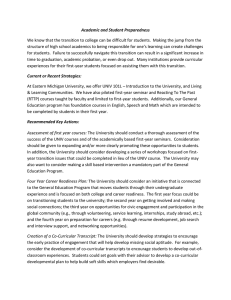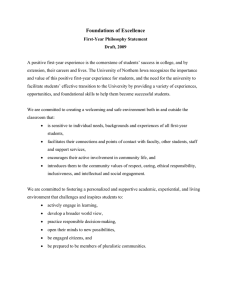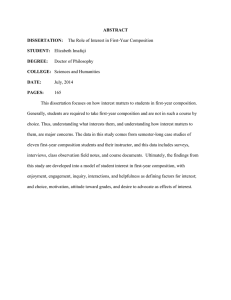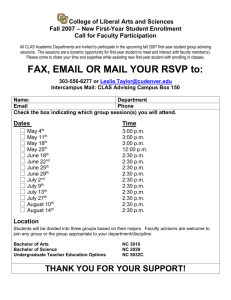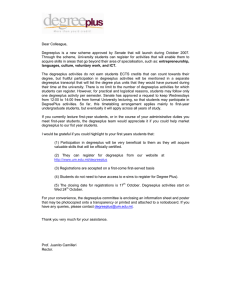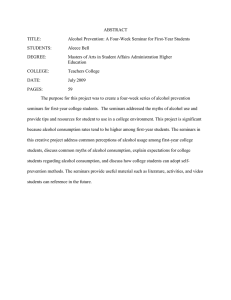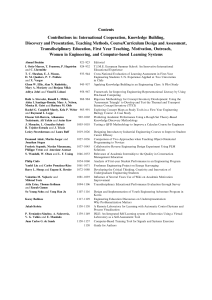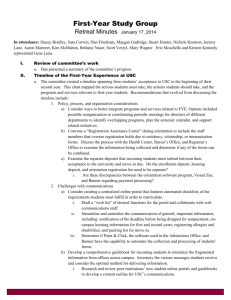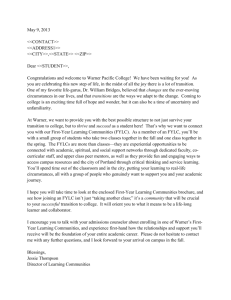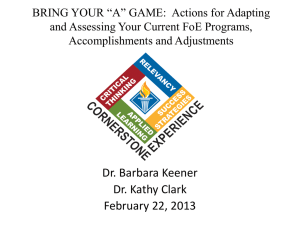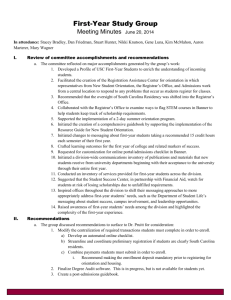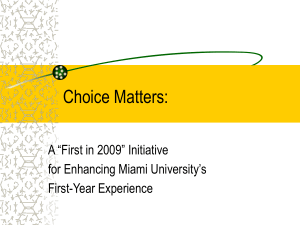Learning Communities Presentation
advertisement
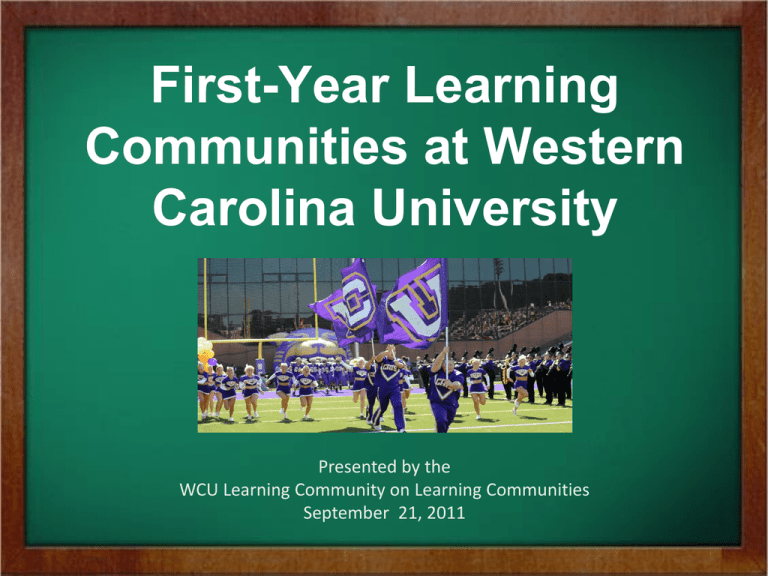
First-Year Learning Communities at Western Carolina University Presented by the WCU Learning Community on Learning Communities September 21, 2011 Who is this for? For first-year students, experience with a learning community is associated with higher levels of academic effort, academic integration, and active and collaborative learning. Zhao, C. & Kuh, G. (2004). Adding value: Learning communities and student engagement. Research in Higher Education, 45(2), 115-138. Who is this for? o First-year students o Student engagement o Holistic approach Why do this? Though they differ in structure, coherence, length, and other design elements, learning communities appear to be a ‘high-impact activity’ – that is, students who participate in them are more engaged in other educationally purposeful activities and report gaining more from college. Kuh, G., Kinzie, J., Schuh, J. & Whitt, E. (2005). Student success in college: Creating conditions that matter. San Francisco, CA: Jossey-Bass. Why do this? o Quality Enhancement Plan o Student retention o Mission How would this look? A learning community is any one of a variety of curricular structures that link together several existing courses--or actually restructure the curricular material entirely--so that students have opportunities for deeper understanding and integration of the material they are learning, and more interaction with one another and their teachers as fellow participants in the learning enterprise. Gabelnick, F., MacGregor, J., Matthews, R., & Smith, B. (1990). Learning communities: Creating connections among students, faculty, and disciplines. New Directions for Teaching and Learning, 41, p. 19. LEAD Living Learning Community Model Academics Residential o o o o Student focused Holistic Liberal studies Usually taught by staff Personal Academic Learning Community Model Academic Class o o o o Promotes interdisciplinary thinking QEP integration Taught by 2 different professors Theme-focused Academic Class Academic Learning Community Model Spring o Team planning and assignments o High faculty satisfaction o Flexible Fall Nested Learning Community Model Academic Course Special Topic Focus o o o o Sensitive to budget concerns Adaptability Opportunity Administrative ease College Learning Community Model Co-curricular College, Department or Major Academic Residential o Advantages to departments/colleges o Introduction to major/academic discipline o Provides co-curricular opportunities What we need… Institutions with the most successful community development efforts are those that have the following organizational characteristics: presidential leadership that provides clear goals and priorities; a structure to support the programs; strategic planning that focuses on community development and mutual interaction; faculty committed and sensitive to needs of at risk learners; and academic support for students. Eyler, J., Giles, D., Stenson, C., & Gray, C. (2001). At a glance: What we know about the effects of servicelearning on college students, faculty, institutions and communities, 1993- 2000 (3rd ed.). Funded by the Corporation for National Service Learn and Serve America, National Service Learning Clearinghouse What we need… o Administrative support o Incentives for faculty and department o Room to be flexible and creative In the College of Education & Allied Professions, our goal is to be the college of choice for students who want a college experience that truly engages them―intellectually, socially and professionally. We are striving to engage our first-year students because we know how important those first two semesters are for student success. Our academic learning community has given us a way to impact our future teachers in a meaningful, holistic way, giving them the opportunity to meet our faculty and other education majors, as well as join in the conversation about education and teaching during that crucial first year. Dr. Perry Schoon, Dean of the College of Education & Allied Professions 14 When should we start? The benefits of learning communities to students are numerous but extend beyond students to faculty and the entire institution. Kellogg, K. 1999. Learning communities. Washington, DC: ERIC Digest. When should we start? o We have begun o Institutional priority o Action timelines (Ref. pg. 9) Kellogg, K. 1999. Learning communities. Washington, DC: ERIC Digest.
